#esp since all this info comes from extra materials so it’s really easy for it to get distorted as it’s passed along
Explore tagged Tumblr posts
Text
I enjoy Mickbell as a character but WHAT is up with the propaganda going on about lately. He and Kuro aren’t just people who don’t know how to communicate but secretly mutually respect each other. And Kuro definitely Mick’s older brother or dad. He might think is. But Mickbell is 4 year older than Kuro, and he comes from a race that ages faster. Kuro doesn’t speak common or have enough context to understand or easily learn that Mickbell is an adult.
Like imagine if it turned out that the troubled 17-year-old paying you in scooby snacks turned out to actually a 30-year-old man.
#like. I think the layers to them are interesting and it’s not all like Evil Mickbell or anything#but it sure as hell is exploitative#and it’s frustrating to see that downplayed#anyway sorry I don’t mean to vagueblog I don’t think that anyone who frames them that way is terrible it’s just. yeah.#esp since all this info comes from extra materials so it’s really easy for it to get distorted as it’s passed along#….. honestly it’s occuring to me in writing this that it’s possible the rest of the party doesn’t actually know how old mickbell is either#WILD IF TRUE
45 notes
·
View notes
Note
Hi! I hope I'm not bothering you, but I love your mood board edits and was wondering if you could explain how you go about making/colouring them? I see lots of places to find gifs but turning them into a set is so hard. Thank you in advance!
hi! first of all thank you so much and second of all it’s not a bother at all! i am happy to give some of my own tips even if my explanation probably isn’t super helpful. i won’t give like a ps tutorial but below the cut (since i included example gifs, it’s VERY long) is my process for my latest jily aesthetic:
i keep track of all my ideas/sets in a spreadsheet (which i won’t show bc there’s a lot of info i’d have to blur/black out) but i always have a list of what scenes i need to gif/what gifs i’m editing and where i’m getting them from. i also include a couple extra ideas in case the gifs i have planned end up being too hard to color or don’t fit in the set. i’ve found it’s best/easiest to start w the list bc there is literally nothing worse than spending hours on a set and then not being able to complete it.
as for actually finding the material, i have a pretty healthy number of scene packs saved in my giffing folder, esp. for things i know i will gif frequently. most of the time i will peruse youtube, vimeo, and instagram for any aesthetic scenes. i also have a lot of gif packs saved specifically for the purpose of making mbs (usually i mix my own gifs w gif packs), if you msg me i’m happy to direct you to some gif packs i use regularly or you can check my #resources tag. a couple tips for finding material:
always opt for download when possible, i used to screen record and the difference when i switched to downloading was astronomical. (it’s easy to lose quality and esp if you’re on mac, quicktime duplicates frames so either you have to manually delete those extras or you get sort of choppy gifs when you load them into ps.)
always use 1080p or better, 720p will work in a pinch for 268px or 177px gifs since you can make up some of that resolution loss with sharpening, but don’t go any lower than that, just love yourself.
for pale sets, look for the right colors. i tend to look for scenes w high color contrast especially if it features poc so it’s easier to color without whitewashing, ie if the subject is a person then i look for light colored or blue/green/violet/white backgrounds. it’ll make your life wayyyyy easier. this also means if you’re making a set try to find scenes with already similar lighting bc you won’t have to work so hard to make it look cohesive.
here’s a quick rundown of what i do before coloring:
import all frames and save all the files in a folder together!!
play around with frame delay so all the gifs are moving at about the same speed, usually keep it between 0.03-0.05s
crop and resize gifs (i use 268x145 most of the time)
convert to timeline
when it comes to coloring it can be really hit or miss, i’ve recently gotten back into my groove but i was having sooo much trouble earlier this year. in general, don’t stress yourself out!! sometimes it’s easier to just find a new scene/gif (hence my list of extras!) than to try too hard to fit a gif into your set. i color all my gifs by scratch (ie no psds) but i tend to follow the same pattern, i’ll explain using these gifs/psd as an example since then i can also explain how to fix white-washing:
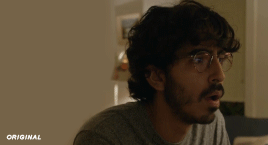

first off when you’re coloring gifs with poc always always always make a layer mask so you can compare the edited and unedited skin tones directly! i use the marquee tool to make a selection in the middle of the character’s face, select the folder of my adjustment layers, and hit ‘add vector mask’ (the third button from the left on the layers panel, it’s a white rectangle with a circle in it).
i almost always begin by using hue/saturation layers to highlight and delete certain colors. here i highlighted red and raised the lightness on yellow by a lot since it’s a very yellow scene. then i use a combination of brightness/contrast, levels, and curves layers to brighten the scene. here’s what i have now:

i add a gradient map set to black/white, change the blending to exclusion, and lower the opacity to between 5-10% (depending on the scene) to lighten the contrast further:

then i add back a little depth with selective color in neutrals and blacks:
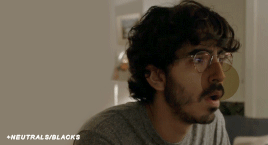
now i have two main goals: 1. add contrast between the background and the subject, and 2. brighten the scene into a pale gif. to do this, i use color balance to tweak the color of the background, taking out the yellows. this step works best if there’s at least some shade difference between your subject and background, otherwise isolating the two will be impossible. here’s what i have after adding color balance:

i use hue/saturation to selectively highlight the background color. in this case i chose to adjust magenta and used the color picker (the first eyedropper on the left) to identify the exact shade i wanted to lighten. now i have a fairly neutral background and a colorful subject, which gives a sort of pale effect:
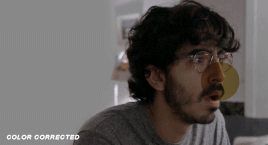
and now i use a curves layer and a selective color (white) layer to brighten further:
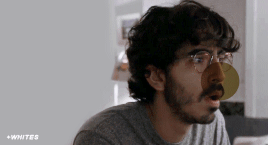

before i go further, i start fixing white-washing. keep in mind that some variance is normal since you are naturally changing the lighting of the scene; this gif shows it rlly clearly bc of how yellow and dim the lighting is, so some lightening is to be expected. however, both because the vector mask shows a lot of whitening and because i’ve giffed dev patel before and have a general idea of what he looks like in this type of lighting, i know what needs to be fixed, so i go back in under the psd/adjustment layers with a combination of selective color (red and neutral) and hue/saturation layers to darken his skin again:

now that some more contrast has been added in, i can go back to working on the psd and use curves and selective color to play around with the background again:

i use another hue/saturation layer and a black/white gradient to tone down oversaturation:


usually i leave those layers on top, so if i want to make any adjustments (like lightening the background more), i go in under those two. in this case i tweaked the whites and reduced the contrast a little to get this:
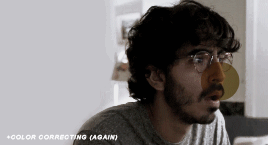

again, you can see his skin tone has changed from the original, but variation is to be expected given how much brighter the room is, the fact that i took out a lot of yellow lighting, and the brightening effect of the computer screen in front of him. some other things to keep in mind when coloring:
when you add layers to correct white-washing, you’re likely to end up with overly red/orange skin tones (red-washing). this can be fixed by upping cyans in the reds, desaturating/darkening the reds, or adding b/w or desaturation later on.
when in doubt, it’s better to be darker than lighter (the issue with white-washing is that it promotes colorism, and there is nothing inherently wrong with a darker skin tone) but really. just put in the effort to color poc correctly.
when changing the lighting a lot it helps to look at pictures of the subject in natural/bright lighting, since you get a better idea of what their normal skin tone is.
don’t try to squeeze all your selective color layers into one. you’ll get less grainy gifs if you separate them out and work one by one.
TURN OFF NIGHT SHIFT/NIGHT MODE! yes i KNOW it’s bad for your eyes (especially if you’re like me and gif at night, when the lighting outside isn’t changing every 20 seconds) but your gifs will look VERY different under f.lux or night mode compared to daytime screens. especially if you’re giffing at different times of day, blue light filters can really change the way your coloring appears. best to keep it consistent.
my sharpening settings vary depending on what i’m giffing but in general i do two layers of smart sharpen (500% with radius between 0.2-0.4, 10% with radius at 10px) and then gaussian blur at 2.5px and adjust the opacity so it’s somewhere between 15-20%. i try to strike a balance between smoothing out the graininess from selective color, and sharpening details like clothes and hair. here’s what i ended up with for the gif above:

then i rinse and repeat for the rest of the gifs in the set! i tend to start with the gifs that i know will be hardest to color, which is usually the darker ones (coloring is limited by how much i can brighten the scene) and those that include poc (again, limited by how much i can brighten and adjust the scene’s lighting without white-washing). then i check set cohesion as i go, using those first few gifs as benchmarks. once i have all 8 (or 9 or 10) gifs, i play around with composition and try to balance and vary the subject, colors, and composition of gifs next to each other. i go back and make a couple of adjustments here and there according to what i observe and what i think might improve the overall appearance.
and that’s pretty much it! i hope this was helpful, if you have other questions feel free to message me and i’d be happy to help/troubleshoot. happy giffing!
#Anonymous#*#resources#answered#sorry this was sO long but i hope it helped on the coloring end#tbh i exceeded my own expectations with the dev gif lol#yeahps#completeresources#chaoticresources#tutorial#coloring tutorial
55 notes
·
View notes
Text
How to excel in school - valedictorian
Start your extracurriculars now a great way to get scholarships, attract attention, and show you're well-rounded. Experiment with a few activities while you're still young. Don't stick to just one area.
Pick the classes you enroll in carefully. Read the class descriptions and talk to other students who have taken the classes you're interested in. Instead, look for classes with students and material that is slightly above your level as the best motivator is competition. Keep in mind the subjects necessary to pursue your intended career. If you're considering becoming a psychologist, for example, take psychology and sociology over Metal Shop and Ceramics. If you can, look at the textbooks for the various classes. Oftentimes the rigor of the textbook will reflect that of the class. Obtain the textbooks early, and supplemental ones too. Ask your teacher or office staff. Always pay attention in class. You might miss some impo info about answers to tests and quizzes. You could get bonus points. Most teachers reward students who are active and participating with extra participation points. This could be a sizable chunk of your grade. Do the homework Don't slack off just because some assignments are "graded for completion" Organize everything - loose papers and notes Makes it easy to find exactly what you're looking for Invest in some small binders and hole punch your papers Keep your syllabus in the front pocket. You'll be referring to it often, so make it easily accessible. File away any homework that's more than a grading period old. Use topic-wise indexes for easier access. Label each paper with a colored pen: classwork, homework, notes. Clear out your backpack. Make and maintain a study place It should be organized and clean, well-lit, quiet and ventilated. Do you have necessary materials at your fingertips? Store all textbooks, notes, etc. within reach - incl. computer with internet If your house is always crowded or noisy, try the library Know the syllabus for every class a syllabus is an outline of everything you're going to do in the class and when Ask your teacher to provide this for you This way you know which areas are concentrated on and when tests will be * You'll know what topics your teacher spends the most time on * You'll know all your deadlines * You'll know the test dates months in advance Set high standards for yourself make yourself and others a promise that you will get acceptable grades on tests and complete all your homework. Take action if your marks start failing before someone else has to point it out to you Find ways to motivate yourself and convince yourself that you want college Do a little studying every night Read through the material in the book you predict or have been told will be covered that day Use review questions at the end of the chapter to make sure of basic understanding of it Write down any questions you have and ask your teacher Cram little facts like dates, names and equations Take good notes Copy down all diagrams as completely as possible Write down anything you think you might not remember Put them in order of date for easy reference later Try to retype notes at home, adding any extra info Get a tutor to help you understand concepts, make the class fun and set problems appropriate for your level. Can offer help and advice between classes and after school often. Talk to your counselor or teacher about a possible tutor you could work with. Start studying a few days before a test 3 days is usually sufficient for adequate study time if leftover time in study session, review some old material for exam Avoid pulling an all-nighter to study for a test. It makes sense that any studying is better than no studying, but when you're so tired, your memory can't function, making that studying pointless. It's sometimes necessary to stay up late to write essays or complete projects since it's better to be exhausted and get credit for the assignment than to sleep and lose the points that could make a difference between an A and a B, or a B and a C. In these cases where a deadline needs to be met, coffee and energy drinks are your best friend. But be warned: once the caffeine wears off, you will probably be even more exhausted than before. Do some extra credit After you finish your homework, do some difficult problems from your supplemental resources do past exams or learn new techniques to help you get the most out of your class Many teachers take extra credit and tack it onto test scores or project scores Give yourself a study break when you need it Begin working on long-term projects as soon as they are assigned 200 point essay due in 45 days - 200/45 = 4.4 points a day 1 point is about 6 min of work - 4.4x6=26~30 min a day Form a study group with friends Designate someone as a group leader Decide which topics you're going to cover that day Have everyone bring a snack and some drinks Have everyone come with a few questions Study when you have small bits of free time Carry around some flashcrds to run thorugh Quickly quiz each other Cram as a last resort Get involved - show you can do more while mantainin excellent grades Art, music, and drama are impressive, too. Colleges are also looking for great artists, singers, musicians, actors, and dancers as well. Join a club. Join any club you are interested in or are good at. If you are great in Spanish, for example, then join the Spanish Club. Love chess? Join the Chess Club. You'll likely meet friends, too. Get involved in more than one thing It really doesn't matter how good you are at it – all that matters is that you try. "Yes, but how good were you at playing Little Orphan Annie?" or "Sure, but how many balls even went to right field?" All they care about is that you were a valuable member to your high school and gave it your all. Volunteer local hospital, animal shelter, old folk's home, soup kitchen, local community theatre, local church, women's shelter, tutor unprivileged kids If your school doesn't offer an activity, try starting it yourself environment club, thespian club Ask teachers or principal if you can have the go-ahead to be a verified club. You'll get into the yearbook and have official status. Prioritize your after-school activities Figure out how much time you need to perform at your best and add thirty minutes to be safe. Then add on at least 8 hours for sleep and the number of hours you spend commuting to or attending school. Subtract this number from 24 and you have the amount of "free time" during your day. Find a calendar for the year and write down all of the activities you would like to do and the amount of time each will take. If you have more scheduled on one day than you have free time, prioritize and cut back on your activities. Also keep in mind that you need some "down time" where you can do nothing but think, chill, and relax. --- TAKE CARE OF YOURSELF Sleep plenty - aim for a solid 8-9 hours a night This affects performance and general understanding Eat a good breakfast every day - full of protein Ask for help when you need it when it comes to homework, quizzes, tests if your teachers, parents and tutors know you're trying your best, they'll want to help you through whatever you're facing. when it comes to general morale. talk to teacher and counsellor about it, if your class load is hard to bear. They might have ideas to help you bear it. School is tough and stressing. Make time for fun. Set every saturday night aside for friends, family, or just time to relax --- WHAT's THE DEAL WITH EXTRACURRICULARS? What activities can be considered an extracurricular which can be included in college applications? Activities outside class / school that reflect an unique interest, talent, or commitment. Feks: volunteering, community service, sports and athletics, clubs at school, arts and performance, and other leadership roles in the community. Also colleges know interests change. Why are these important to colleges anyway? Colleges care about building up campus lif and want to admit students who will positively contribute to their campus experience. Besides extracurriculars help and teach students to balance and manage their time. This is esp important in college where you suddenly have much more freedom and responsibilities over your studies. Extracurriculars also helps admission counselors understand the student's interests. They're looking for students who are commited - dvs. longevity > quantity of extracurriculars. Mustn't look like you signed up for anything. Show that your membership meant something, and that you contributed and participated more than just the bare minimum. Ideally tell a story of how participating helped you grow and develop. * Does this college understand where my student's true interests and passions lie? * Can admissions counselors see a strong commitment to a club or organization across your student's high school career? * Did or does your student pursue leadership opportunities with a team or club? * Have they started a new club or team? The goal of admissions counselors is to understand your student. They want to know what your student contributed to these extracurriculars. Incl. what experiences, insight and leadership qualities they gained as a result. How did your student deal with a disagreement between teammates in the middle of a game or competition? How did they work with others to move their group or club forward? What skills did they gain that will help them positively contribute to their future school community, or to their future life experiences? These non-cognitive skills are crucial to your student’s success in college, but might not always be measured in a GPA or test score. Colleges are looking for students who are going to be positive additions to their college campus, students who are committed, take initiative, have track records of success, and have a variety of interests. Colleges and admissions officers want to know how students’ past experiences will help them achieve in their future. --- Pointers given by teachers: Be an active participant during class * Ask good questions * Participate in discussions * Stay off electronics Frame questions in a non-accusatory tone Instead of asking a question like “Why did you take off points for that?” use something along the lines of “Can you explain what I need improve for next time?” Never confront or correct a teacher in front of other students * Do so privately - before or after school *
0 notes